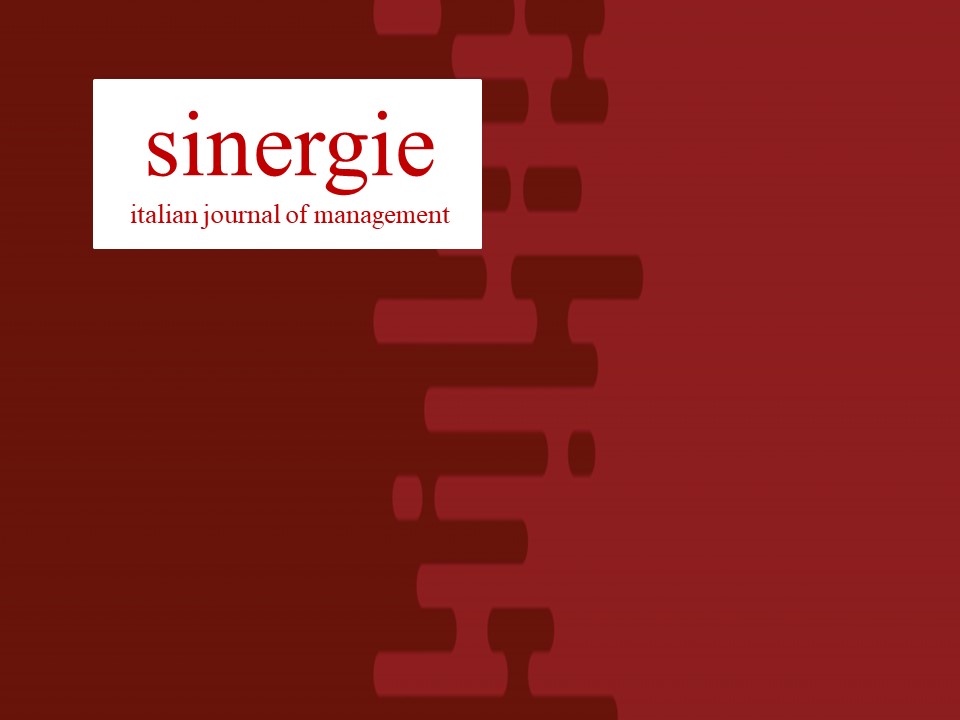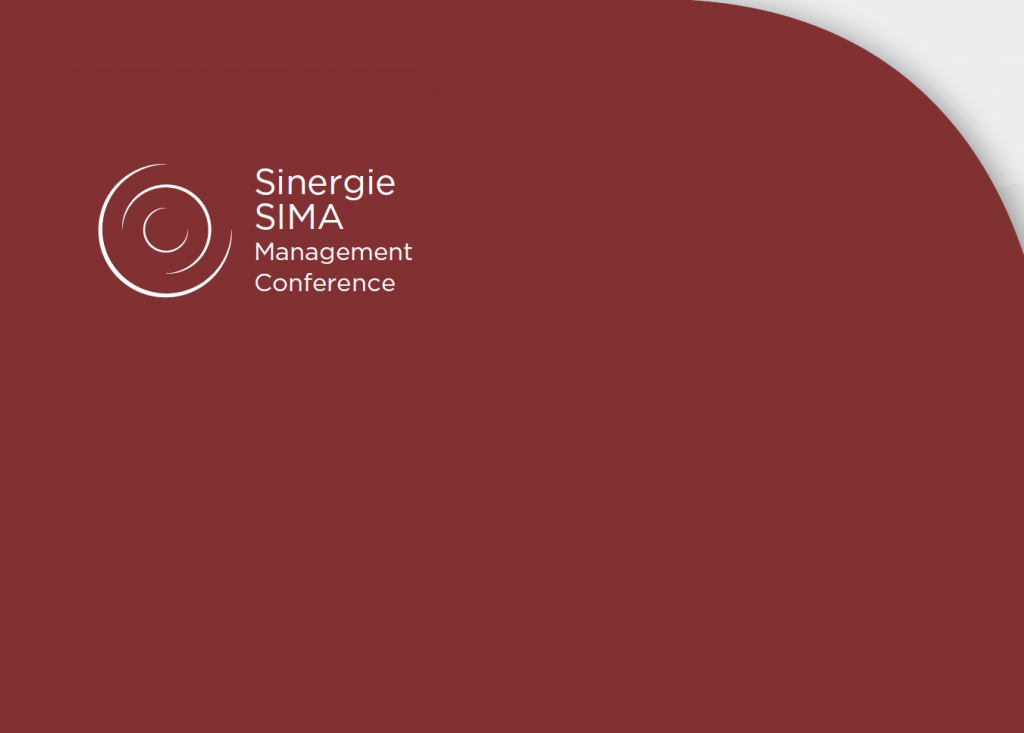Drivers and implications of medical tourism: a neo-institutional perspective
Purpose of the paper: The paper aims at adding a new contribution to the field of Medical Tourism by proposing a Situationist View of the phenomenon. In doing this, we have taken into account the global dimension of Medical Tourism, thus widening the well-known neo-institutional framework.
Methods: We scanned Business Source Premier, Elsevier Freedom Collection, and JSTOR, using Medical Tourism and neo-institutionalism search criteria. After realizing the lack of resources about the topic, we matched the available contributions about Medical Tourism and neo – institutionalism in order to develop a new theoretical framework.
Findings: The original neo-institutional model has been widened for the first time in order to provide a better understanding of Medical Tourisms worldwide dimension.
Originality and limits of the study: The main contribution of the paper is its potential to reach beyond the more narrowly focused journals where many of the contributions about Medical Tourism reside.
The lack of empirical evidence is one of the main limits of the paper. Because of the innovativeness of the developed theoretical framework, future investigations need to be carried out.
Practical Implications: The developed theoretical framework provides the basis for a better understanding of Medical Tourism at a global level, as well as of the dynamics that underlie it. Additionally, our paper poses new and interesting research questions about the potential sustainability of Medical Tourism at a societal level, thus requiring future investigation into the issue.
Riferimenti bibliografici
ADAMS K., SNYDER J., CROOKS V.A., JOHNSTON R. (2013), Promoting social responsibility amongst health care users: medical tourists perspectives on an information sheet regarding ethical concerns in medical tourism, Philosophy, Ethics, and Humanities in Medicine, vol. 8, n. 19, pp. 1-10.
ALDRICH H.E., FIOL M.C. (1994), Fools Rush In? The Institutional Context of Industry Creation, Academy of Management Review, vol. 19, n. 4, pp. 645-670.
BLOUIN C., CHOPRA M., VAN DER HOEVEN R. (2009), Trade and social determinants of health, Lancet, vol. 373, n. 9662, pp. 502-507.
CALABRESE G., BERTIPAGLIA M., MORRIELLO D. (2011), Azione etica e istituzionalizzazione morale nella visione situazionista dellimpresa. La strategia di Banca Popolare Etica, Sinergie, n. 86, pp. 113-132.
CANESTRINO R. (2007), Business Ethics and Firms internationalization processes. The impact of culture on ethical gap, IACCM Conference Cross-cultural Life of Social Values, 18-19 May, Rotterdam.
CAROLILLO G., MASTROBERARDINO P., NIGRO C. (2011), The 2007 financial crisis: strategic actors and processes of construction of a concrete system, Journal of Management and Governance, vol. 17, n. 2, pp. 453-489.
CLEMENS E.S., COOK J.M. (1999), Politics and institutionalism: explaining durability and change, Annual Review of Sociology, vol. 25, pp. 441-466.
COHEN G. (2013), Transplant Tourism: The Ethics and Regulation of International Markets for Organs, The Journal of Law, Medicine and Ethics, vol. 41, n. 1, pp. 269-285.
COHEN J., WASEMAEL Y.V., SMETS T., BILSEN J., DELIENS L. (2012), Cultural differences affecting euthanasia practice in Belgium: One law but different attitudes and practices in Flanders and Wallonia, Social Science and Medicine, vol. 75, n. 5, pp. 845-853.
CONNELL J. (2006), Medical tourism: Sea, sun, sand and surgery, Tourism Management, vol. 27, n. 6, pp. 1093-1100.
CONNELL J. (2013), Contemporary medical tourism: Conceptualisation, culture and commodification, Tourism Management, vol. 34, n. 1, pp. 1-13.
CORMANY D., BALOGLU S. (2011), Medical travel facilitator websites: An exploratory study of web page contents and services offered to the prospective medical tourist, Tourism Management, vol. 32, n. 4, pp. 709-716.
DIMAGGIO P.J., POWELL W.W. (1983), Institutional Isomorphism: The Iron Case, American Sociological Review, vol. 48, n. 4, pp. 147-160.
DONALDSON T., DUNFEE T.W. (1994), Towards a unified conception of business ethics: Integrative social contracts theory, Academy of Management Review, vol. 19, n. 2, pp. 252-84.
GHODS A.J., SAVAJ S. (2006), Iranian Model of Paid and Regulated Piving-Unrelated Kidney Donation, American Society of Nephrology, vol. 1, n. 6, pp. 1136-1145.
GREENWOOD R., SUDDABY R. (2006), Institutional Entrepreneurship in mature fields. The Big Five accounting firms, Academy of Management Journal, vol. 49, n. 1, pp. 27-48
HADI A. (2009), Globalization, medical tourism and health equity, Symposium on Implications of Medical Tourism for Canadian Health and Health Policy, 13 November, Ottawa.
HEUNG V.C.S., KUCUKUSTA D., SONG H. (2010), A Conceptual Model of Medical Tourism: Implication for Future Research, Journal of Travel and Tourism Marketing, vol. 27, n. 3, pp. 236-251.
HIGGINBOTHAM G. (2011), Assisted-suicide tourism: is it tourism?, Turismos: An International Multidisciplinary Journal of Tourism, vol. 6, n. 2, pp. 177-185.
HOPKINS L., LABONT R., RUNNELS V., PACKER C. (2010), Medical Tourism Today: what is the state of existing Knowledge?, Journal of Public Health Policy, vol. 31, n. 2, pp. 185-198.
HURST S.A., MAURON A., (2003), Assisted suicide and euthanasia in Switzerland: allowing a role for nonphysicians, BMJ, vol. 326, n. 7383, pp. 271-273.
INHORN M.C. (2011), Diasporic Dreaming: return reproductive tourism to the Middle East, Reproductive Biomedicine Online, vol. 23 n. 5, pp. 582-591.
JAGYASI P. (2008), Defining medical tourism. Another approach, Medical Tourism Magazine, n. 6, pp. 9-11, available at http://www.medicaltourismmag.com/wp-content/uploads/2008/08/issue-6.pdf.
JOHNSTON R., CROOKS V., SNYDER J., KINGSBURY P. (2010), What is known about the effects of medical tourism in destination and departure countries? A scoping review, International Journal for Equity in Health, vol. 9, n. 1, pp. 24.
KOPSON M.S. (2010), Medical tourism: implications for providers and plans, Journal of Health and Life Sciences Law, vol. 3, n. 2, pp. 147-165.
LAWS E. (1996), Health tourism: A business opportunity approach in Clift S. and S.J. page (Eds.) Health and the International Tourist (pp. 199-214), Routledge: London and new York.
LOUNSBURY M., GLYNN M.A. (2001), Cultural entrepreneurship: Stories, legitimacy, and the acquisition of resources, Strategic Management Journal, vol. 22, n. 6-7, pp. 545-564.
LUNT N., CARRERA P. (2010), Medical tourism: assessing the evidence on treatment abroad, Maturitas, vol. 66, n. 1, pp. 27-32.
LUNT N., SMITH R., EXWORTHY M., GREEN S.T., HORSFALL D., MANNION R. (2012), Medical Tourism: Treatments Market and Health System Implications. A scoping review, OECD, Directorate for Employment, Labour and Social Affairs. Available at: [Accessed 25 August 2014].
MARTIN L. (2009), Reproductive tourism in the age of globalization, Globalizations, vol. 6, n. 2, pp. 249-263.
MASTROBERARDINO P., NIGRO C. (a cura di) (2009), Le dinamiche di governance dimpresa. Cenni sullapproccio etnometodologico, ESI, Napoli.
MASTROBERARDINO P., NIGRO C., CALABRESE G., PETRACCA M. (2013a), Il processo innovativo nella prospettiva situazionista, Referred Conference Proceedings XXV Convegno annuale di Sinergie Linnovazione per la competitivit delle imprese, Ancona 24-25 October, pp. 35-49.
MASTROBERARDINO P., IANNUZZI E., CORTESE F., MORRIELLO D. (2013b), Processi isomorfici, innovazione e cambiamento, Referred Conference Proceedings XXV Convegno annuale di Sinergie Convegno annuale di Sinergie Linnovazione per la competitivit delle imprese, 24-25 October, pp. 21-34.
MATERSTVEDT L.J., CLARK D., ELLERSHAW J., FORDE R., GRAVGAARD A.M., MLLER-BUSCH H.C., PORTA I SALES J., RAPIN C.H. (2003), Euthanasia and physician-assisted suicide: a view from an EAPC Ethics Task Force, Palliative Medicine, vol. 17, n. 2, pp. 97-101.
MEYER J.W., ROWAN B. (1977), Institutional organizations: Formal structure as myth and ceremony, American Journal of Sociology, vol. 83, n. 2, pp. 340-363.
NIGRO C., IANNUZZI E., PETRACCA M. (2015), Cultural Management between Isomorphism and Docoupling Conference Proceeding, IFKAD, June 2015, Bari, Italy.
NIGRO C., IANNUZZI E., CAROLILLO G. (2011), Comunicazione e strutturazione di un quadro istituzionale. Riflessioni sulla recente crisi del sistema finanziario, Sinergie, n. 89, pp. 109-130.
PENNINGS G. (2002), Reproductive tourism as moral pluralism in motion, Journal of Medical Ethics, vol. 28, n. 6, pp. 337-341.
POCOCK N.S., PHUA K.H. (2011), Medical tourism and policy implications for health systems: a conceptual framework from a comparative study of Thailand, Singapore and Malaysia, Globalization and Health, vol. 7, n. 1, pp. 1-12.
POLLARD K. (2011), The medical tourism numbers game Part 2. www.imtj.com/articles/2011/blog-medical-toursim-nmbers-game-part-two-401.
ROBERTSON D.C. (2002), Business Ethics across Cultures in Gannon M.J., Newman K.L., The Handbook of cross-cultural Management, Blackwell Business , Oxford.
SANMARTIN C., GENDRON F., BERTHELOT J., MURPHY K. (2004), Access to Health Care Services in Canada, 2003, Catalogue No. 82-575-XIE, Statistics Canada, Ottawa.
SCOTT R.W. (1998), Organizations: Rational natural and open systems, Upper Saddle River, Prentice Hall, Englewood Cliffs, NJ.
SMITH M., PUCZKO L. (2009), Health and Wellness Tourism, Butterworth-Heinemann, Routledge, London.
STAJKOVIC A.D., LUTHANS F. (2001), Differential effects of incentive motivators on work performance, Academy of Management Journal, vol. 44, n. 3, pp. 580-590.
TURNER L. (2007), First World Health Care at Third World Prices: Globalization, Bioethics and Medical Tourism BioSocieties vol. 2, n. 3, pp. 303-325.
TURNER L. (2008), Cross-border dental care: dental tourism and patient mobility, British Dental Journal, vol. 204, n. 10, May, pp. 553-554.
WATTS J. (2007), China introduces new rules to deter human organ trade, Lancet, vol. 369, n. 9577, pp. 1917-11918.


